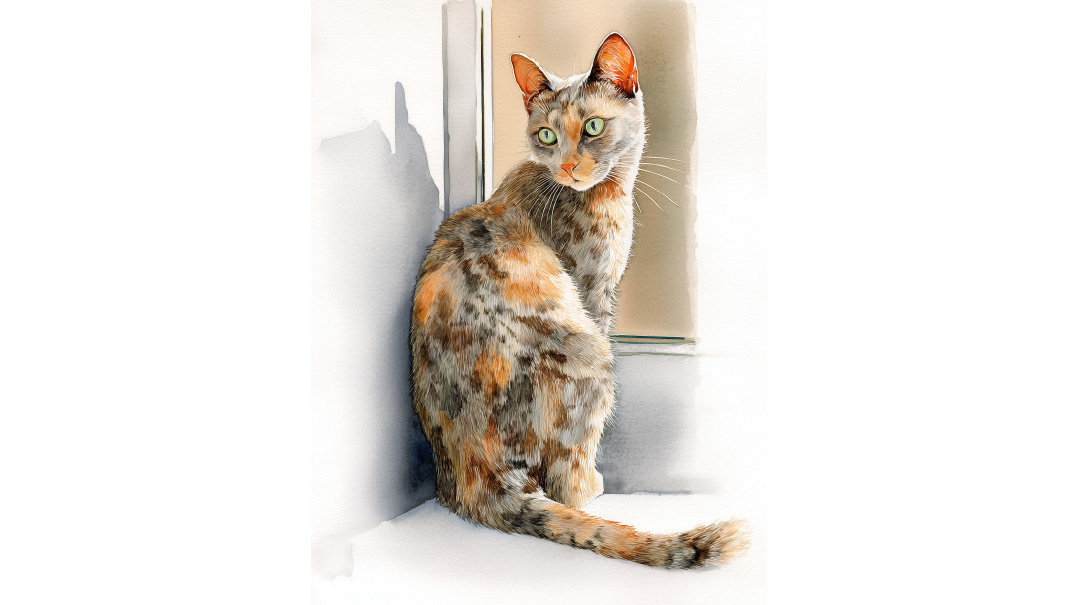The Sheitel and the Shtreimel: a Hirsute Conversation

Pardon the lecture, but there is something mysterious about hair, and it goes beyond the modesty issue
Once upon a time, a sheitel and a shtreimel, each out for a stroll, passed each other on a busy street.
After the usual amenities, the shtreimel asked the sheitel: Pardon me for asking, but why do women wear these hairpieces?
Because of modesty, answered the sheitel, it’s well known that showing our natural hair is considered immodest.
But that is precisely my point: do not the women who wear these hairpieces look much better in them?
Well, yes, but technically they are not our natural hair, so that is okay.
The shtreimel wondered aloud: When you consider the role of human hair in Judaism, it is rather fascinating. For example the Nazirite, who wishes to become a more spiritual person, is commanded to shave all of his hair, as explained by Seforno in Bamidbar 6. The source of the superhuman strength of Samson the Mighty, in Shoftim 16, was that he never cut his hair. And Avshalom, son of King David, was considered the most handsome man in all Israel partly because of his beautiful hair — which he would cut only once a year — and this magnificent hair was his undoing, as in II Shmuel 18. And then there is the odd midrash saying that the young Yosef was mesalsel b’saaro, “teasing” his hair. Pardon the lecture, but there is something mysterious about hair, and it goes beyond the modesty issue. Still, if one of the purposes of the sheitel is modesty, then is not a beautiful sheitel that enhances one’s attractiveness rather counterintuitive?
Good question, and frequently asked. The fact is that there have been many rabbinic efforts to curb the sheitel and to revert back to a simple hat or scarf-like snood or tichel, and there are certain Orthodox Jewish women who on principle never wear a sheitel but only a scarf-like tichel. But by and large, the sheitel has demonstrated great staying power and resiliency.
By the way, just curious, but how much does a good sheitel cost?
Between $1,000 and $3,000, sometimes closer to $5,000.
And since most women have two — one for the weekdays, and one for Shabbos — that could amount to quite a costly outlay; one might even say extravagant.
It does indeed appear extravagant, but for those who wear one, this is a necessity, not a luxury; no different, say, from shoes, a topcoat, or a sweater — simply a must-have item.
But a poor family could live quite a while on $5,000. Would not that be a better way to spend one’s money?
It’s not a matter of either-or. Sheitel wearers give their share of tzedakah as well. And you know how it is; luxury grows on you and soon becomes a necessity.
But I’ve heard one can buy very good hairpieces online for well under $1,000.
True, but the quality is just not the same. But let us talk about you. Is not your headgear rather expensive as well?
Yes. It could also run as much as $5,000.
Why do you wear it? Why not just wear a regular black hat, like most Orthodox men?
The shtreimel is more than a mere head covering, more than a mere hat. It is an old tradition among certain chassidic groups. It represents a crown and splendor, something worn only by nobility, and is worn only on Shabbos and Yom Tov and special festive occasions — when the Jew feels the nobility and sanctity of holy days.
Lubavitch-Chabad are also chassidim, but they simply wear a regular snap-brim fedora. Why do they not wear a shtreimel as well?
They are emulating the head covering of the late Lubavitcher Rebbe z”l, and this is how they identify with his spirit.
Is shtreimel a Biblical commandment?
Not at all; it probably dates back to 18th-century Hungary and Poland
Then why do people spend small fortunes to obtain one?
Here, too, for some people it is a necessity and not a luxury.
But an expensive necessity. Here, too, a poor family could buy lots groceries for $5,000.Is there religious significance to a shtreimel? Can anyone wear one if he wants to?
Strictly speaking, he would not be in violation. There is nothing intrinsically sacred about a shtreimel. One could wear a knitted yarmulke and fulfill the requirement not to go about bareheaded. But unless he is part of the group that wears them, it might be considered disrespectful for an outsider to wear a shtreimel, because it does represent an old and cherished way of life.
The sheitel observed: It is rather odd, is it not, that sheitels and shtreimels have so much in common. Each is a head covering, each is very costly, and each is treated reverentially, even though there is no Biblical requirement to wear one.
The shtreimel responded: there is one major difference, however: since a Jewish man is required to cover his head, the shtreimel does so quite thoroughly. But with all due respect, in a way, many sheitels nowadays are not always models of modesty.
This is true, but only on the surface, because a sheitel need not be worn in a provocative way. There are simple styles that maintain modesty and still look fine. Much depends on how the wearer has them cut, and how she displays them.
The sheitel and the shtreimel eyed one another’s hairpiece, nodded their heads to one another, wished each other well, and, lost in thought, continued on their respective ways. They failed to notice that coming toward them on the other side of the street was a small, colorful, knitted kippah talking animatedly to a large black velvet yarmulke.
It would have been interesting to include them in a discussion of the mystical meaning of human hair, the philosophy of head coverings, their sizes, shapes and purposes, but as fate would have it, we have run out of space….
(Originally featured in Mishpacha, Issue 1018)
Oops! We could not locate your form.






